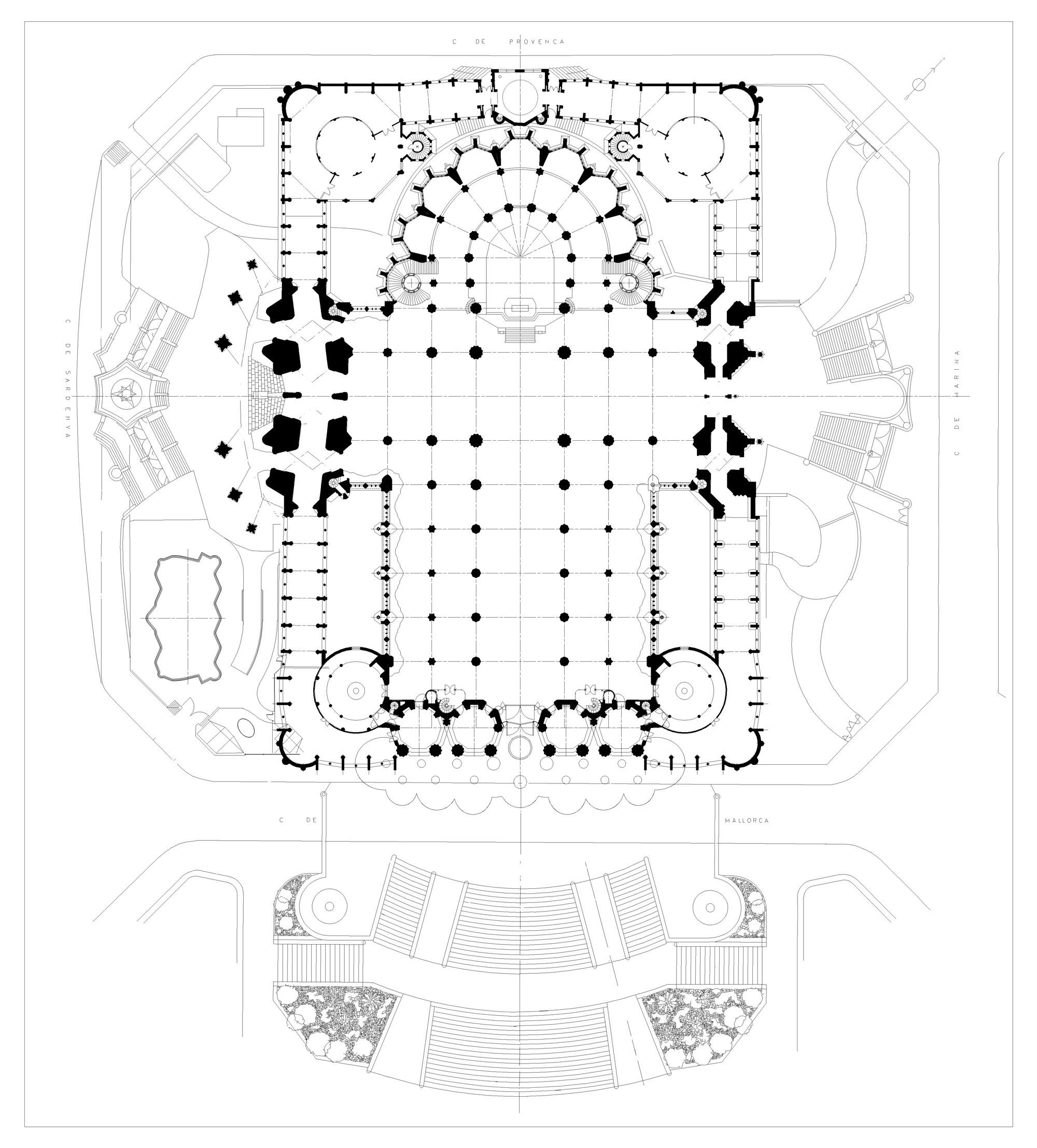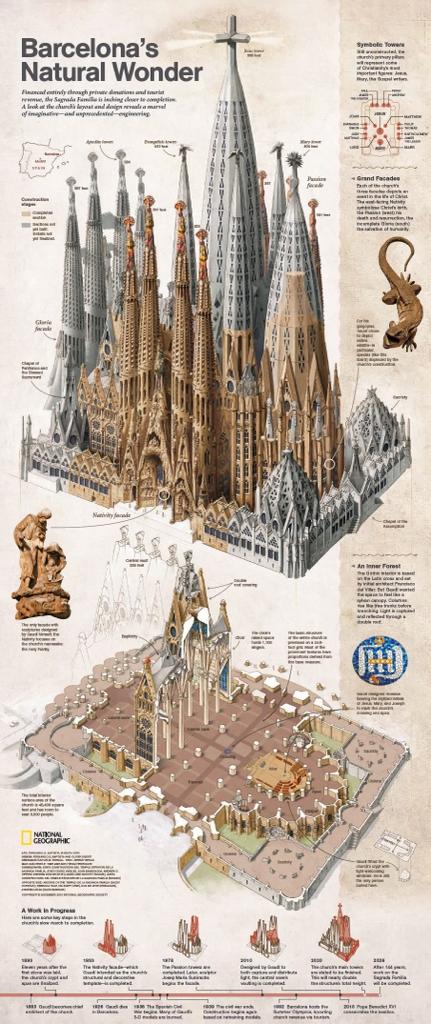The architect that i chose to study on the second practical part was Antoni Gaudi, a famous spanish architect, very wellknown for his incredible artistic works, such as La Sagrada Familia. This building is located in Barcelona and was begun in 1882, but still isn’t finished in the first quarter of the 21st century.
Gaudi planned the layout of the church so that it would be easy for any architect to follow the plans and continue the building process after him. In order for future architects to create their ideas in accordance with his vision, he also constructed models of the Glory Facade. Additionally, he staged the construction of the church because he was aware that it would not be finished in his lifetime. This was done so that architects from many eras may include their unique styles into the church’s architecture. This is it’s floor plan:


Gaudi’s works all have many symbols and patterns, some examples are the following ones: Gaud’s plans and models, the majority of which were destroyed during the Spanish Civil War, depict a massive structure with room for 13,000 people. The Latin cross is encircled by porticoes on three sides and was constructed using a basic basilica design. The main entry is flanked by the Splendour façade, which illustrates how people might celebrate the divine glory, the Passion facade, which depicts Jesus’ Crucifixion, and the Nativity facade, which features scenes commemorating Jesus’ birth. The 18 enormous spindle-shaped towers rising above reflect many biblical figures, including the Virgin Mary, Jesus, the 12 Apostles, and the four evangelists (represented by what will eventually be the tallest, central tower). St. Barnabas, St. Matthias, and St. Paul stand in for the traitor Judas and the evangelists St. John and St. Matthew in the four bell towers that flank each of the three facades. The main nave’s six center towers, which symbolise Jesus and Mary encircled by the four evangelists, act as lanterns by letting light from above into the space.
Only the Nativity facade, one bell tower, the apse, and the crypt were completed when Gaud passed away in 1926; his student Domènec Sugranyes later took over the project. Given that he thought it would take 200 years for his vision to be realized, Gaudi, whose tomb is located beneath the cathedral, was aware he would not live to see it realized. However, as he put it, “The patron of this project is not in a rush.” In 1984, UNESCO declared the works of Gaudi, including the Sagrada Famlia’s crypt and Nativity facade, as a World Heritage site. Pope Benedict XVI classified the unfinished building as a minor basilica and dedicated it for religious use in 2010.
